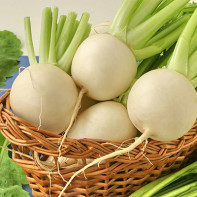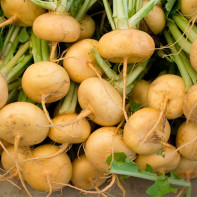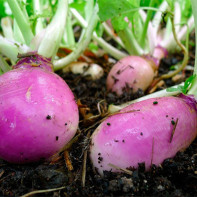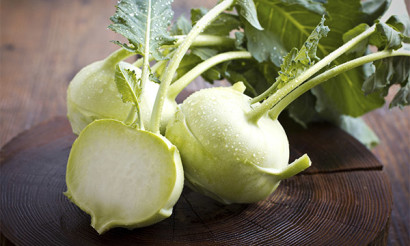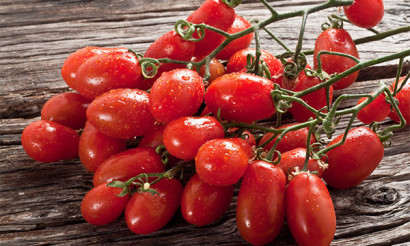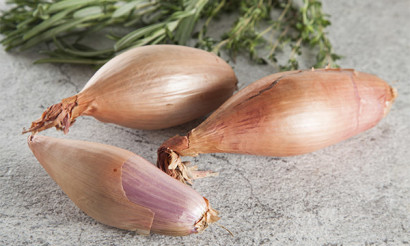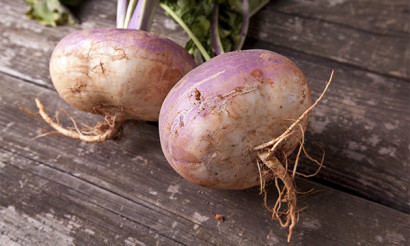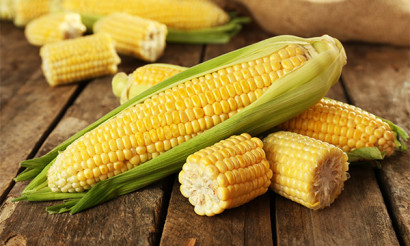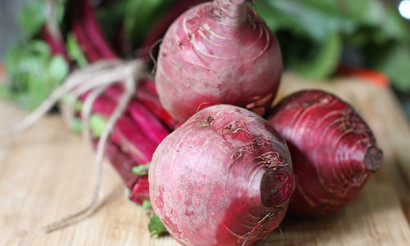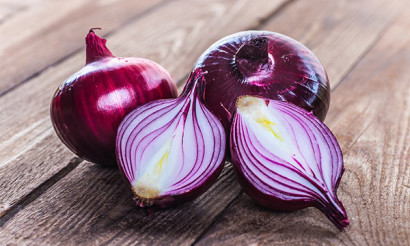Turnip: composition, useful properties and recipes
Everyone remembers a simple children's fairy tale, where a little mouse helped the merry family to pull out a huge turnip. By the way, this wonderful root vegetable, carefully grown in many garden plots, is very often mentioned in Russian folk tales in different interpretations - it is both fresh turnip, and sweet steamed, and boiled. And not for nothing! In Russia turnips were loved and respected. It was used to cook most dishes and cure some diseases. Our wise ancestors knew that the vegetable has a truly heroic power, restoring and healing.
- What is the difference between turnips and radishes
- Composition and calories
- Useful properties of turnips
- General benefits
- For Women
- For Men
- In Pregnancy
- Breastfeeding
- For children
- When losing weight
- Types of turnips and their benefits
- White
- Black
- Yellow
- Green
- Pink
- Turnip heads are useful
- What is the usefulness of turnip juice
- Turnip heads in medicine
- Diabetes mellitus
- For pancreatitis
- For gastritis
- For gout
- For the liver
- For cholecystitis
- For cough
- Turnip-based folk medicine recipes
- For metabolic improvement
- Against coughs
- Against Gout
- For colds
- For a toothache
- For frostbite
- For cystitis
- Cosmetic Applications
- For Face
- For Hair
- Harms and Contraindications
- How to choose and store turnips
- Can I freeze it?
- How to cook turnips: Recipes
- Turnip with thyme
- Nut and beet salad with turnips
- Cucumber turnip salad with egg
- How to eat turnips
- How much you can eat per day
- Can I Eat Tonight?
- Can I Eat Raw Turnips?
- How to remove bitterness from turnips
- Can I Give Turnips to Animals?
- Interesting facts about turnips
In modern society, few people are fond of dishes from turnips, but this is only because of ignorance of its benefits, proven by a thousand-year history of existence.
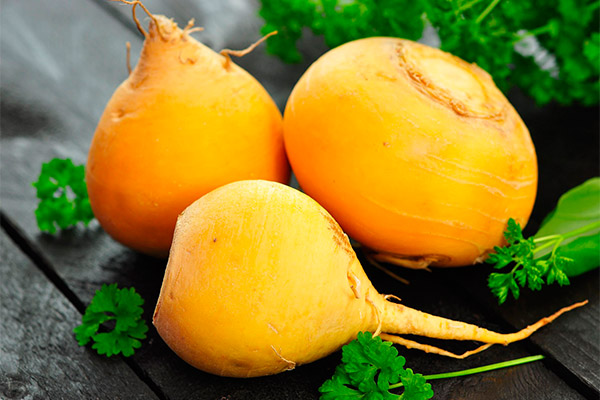
The plant itself belongs to the cabbage genus. Turnip originated in Western Asia, where it appeared almost 40 centuries ago. Inhabitants of ancient Egypt and Rome were familiar with the vegetable. It was also cultivated by the ancient Greeks, who called the root vegetable "gara", which meant food for the common people. The Greeks worked so hard growing turnips that some of their vegetables weighed more than ten pounds.
In Russia, turnips were a staple food until the 18th century. Turnips were eaten raw, baked, steamed, boiled, and used for stuffing poultry. The failure of turnips, mentioned in the chronicles of the 11-13 centuries, was like a natural disaster. In the 18th century, the right to be called a popular vegetable "won back" the potato. Turnip is an annual or biennial, blooming with yellow inflorescences. Root vegetables come in yellow, green, white, black, purple, pink with a characteristic "tail.
They all differ in taste, but useful substances that can have a positive effect on the human body, has every kind of root vegetable.
What is the difference between turnip and radish
It happens that the turnip is confused with the radish. Of course, both belong to the cabbage family and have similar biological data, but still they are completely different and have the following differences:
- In shape, turnip fruits can be round, elongated and flat. The radish is also round and elongated, but no one has ever met a flat representative of this species.
- The color of the vegetable also differs. Whereas a turnip can be seen with a light yellow or white color, a radish is black, green (daikon) and white.
- Their taste characteristics are also different: the soft sweetness of the turnip is not at all like the sharp taste of the radish.
- Chefs also divide these two vegetables by the way they are served. As a rule, radishes are used for eating raw, while turnips are used baked and stewed.
These are the main differences between the two vegetable crops, which also attribute them to completely different species of the same family.
Composition and calories
The yellow root vegetable is known for its nutritional and healing properties. The product is rich in vitamins and minerals that help it restore human health and maintain the basic functions of the body, saturating it with vitamins and minerals.
The vitamin composition of the product is presented as follows:
- Е;
- К;
- С;
- В1;
- В2;
- RR;
- В4;
- В5;
- В6;
- В9.
The mineral composition of turnips is as follows:
- calcium;
- magnesium;
- iron;
- sodium;
- zinc;
- phosphorus;
- selenium;
- copper;
- manganese.
The root vegetable also has a fairly large list of amino acids, which include:
- lysine;
- threonine;
- isoleucine;
- cystine;
- valine;
- arginine;
- methionine;
- phenylalanine;
- histidine;
- glycine;
- serine;
- proline.
Acids include:
- palmitic acid;
- stearic;
- palmitoleic;
- oleic;
- linoleic;
- phytosterols.
Nutritional value of the product has the following indicators per 100 grams: protein - 0.9 g, fat - 0.1 g, carbohydrates - 6.4 g. The caloric value is 28 kcal.
It is thanks to this content of micro- and macroelements, solar turnip and became a unique product that gives health and longevity.
Useful properties of turnips
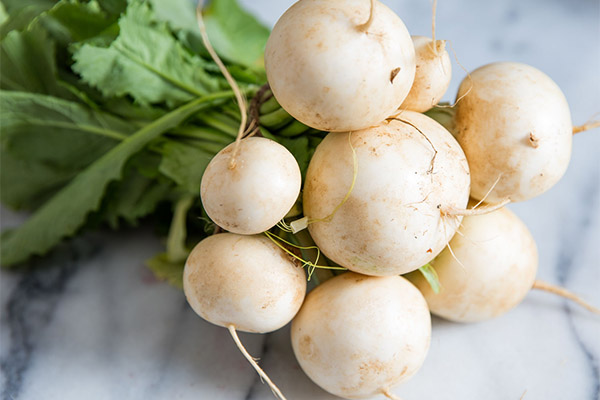
General benefits
Nutritional value and chemical composition of the vegetable caused the presence in it almost all the vital substances on which depends the healthy existence of man and his longevity. The useful properties of turnips are as follows:
- normalization of the intestines and stomach;
- reducing joint pain;
- protection against the formation of malignant tumors;
- improvement of phlegm discharge due to antitussive properties;
- purification of the body from toxins;
- reduction of edema;
- normalization of the reproductive system;
- improvement of appearance;
- regulation of the cardiovascular system and the gastrointestinal tract;
- breakdown of salt deposits;
- regulation of the digestive system;
- Improvement of general condition in patients suffering from asthma;
- Relief of pain symptoms in gout;
- reduction of inflammatory processes;
- relief of avitaminosis;
- breaking up gallstones in the gallbladder;
- activation of brain activity;
- strengthening of the bone skeleton and nail plates;
- elimination of toothache;
- restoration of hair structure.
This is the general effect of the root vegetable on the human body. But we should not forget that the turnip is a magic vegetable, so its miraculous power is able to provide directional help to both women and men and children, whose diseases differ due to individual and age peculiarities.
For women
Turnip is an invaluable vegetable for the female body, which must be in the diet of every representative of the fair sex. Its benefits for women are invaluable and include the following:
- reducing the risk of cancer of the breast and uterus;
- Strengthening of hair and nail plate;
- improvement of skin condition;
- assistance in losing weight;
- treatment and prevention of diseases of the genitourinary system of the body.
Also turnip helps to cope with depression and mood swings, which is very important for women at menopause.
For men
The unique root vegetable could also be called a male vegetable, because it is very useful for the health of the male half of mankind in the following aspects:
- prevents the development of prostate diseases;
- increases sexual activity and testosterone levels;
- Helps to get rid of early baldness;
- Cleans blood vessels, thereby reducing the risk of atherosclerosis.
When pregnant
Turnip is the very root vegetable, the use of which during pregnancy has a beneficial effect on the body of the mother and child. First of all, this is due to the presence of B vitamins in it. Thanks to them turnip helps to cope with bouts of toxicity, supports normal heart function, controls digestive processes, ensures the growth of the baby and saturates the body of the expectant mother with useful nutrients, necessary for a healthy pregnancy and fetal development. Vitamin C, also contained in the root vegetable, increases the body's resistance to infectious viruses. In addition, folic acid, which is rich in root vegetables, helps the proper formation of the neural tube of the fetus.
But it is worth noting that the use of turnips is possible if a woman has no problems and disorders of the gastrointestinal tract, thyroid gland or liver. With such pathologies and disorders, it is necessary to refuse to include in the daily menu of this root vegetable, which can cause harm. Also remember that the daily rate is 300 grams, and the product should be eaten in the morning or in the afternoon, but not before going to bed, because turnips affect the kidneys, and you can forget about a restful sleep. So eat turnips, but in moderation, and not at night!
When breastfeeding
Experts recommend consuming the root vegetable during lactation, if the young mother has no CNS, liver, kidney diseases and no increased acidity of the stomach. If there are no such problems, then the root vegetable will be a very useful, nutritious product that can protect against viruses, improve digestion, saturate the body with useful trace elements and take care of the earliest recovery figure. It should be introduced not earlier than four months after the birth of the baby, and it is better to do it in the form of puree or baked dish. Raw turnips have a bitter taste that can affect breast milk and also cause colic and digestive problems.
For children
For young children and adolescents, turnips can help cope with the following diseases and problems specific to a certain age:
- Flu. Vitamin C protects the immune system and activates its work.
- Cough. It is in the fresh form turnip will help to improve the discharge of phlegm and cope with cough and bronchitis.
Magnesium and vitamin B, which are contained in sufficient quantities in the root vegetable, will help activate brain activity. Hyperactive kids will help the vegetable to calm down and normalize the function of the nervous system. Teenagers who suffer from acne can count on the help of turnips to cope with this problem.
But experts advise not to consume the product in raw form before the age of 4 years, in order to avoid negative consequences in a child. And in the baby's complementary foods can be introduced from the root vegetable, starting at 2 years of age.
When losing weight
People who seek to improve their parameters and are struggling with extra pounds, very often experience health problems due to the insufficient amount of useful substances coming into the body. The composition of turnips, its useful properties will help make up for the lack of vitamins and minerals, thus preventing the development of diseases, to which the weakened body is most susceptible. Turnip helps to cope with avitaminosis, purify from toxins, satisfy hunger and keep the skin healthy. Nutritionists believe that those who sit on a diet, turnips should eat no more than three times a week. With such a diet, it will help to achieve the goal faster and provide the body with all the necessary micronutrients.
In addition, the caloric value of the product is only 28 kcal, which indicates that the use of the root vegetable is not contraindicated in weight loss and will bring only one benefit.
Types of turnips and its benefits
Most people associate turnips with a yellow round root vegetable, which has a sweetish-bitter taste. But in fact, this is only one species. There are white, yellow, black, green and even pink turnips. Depending on the color and, accordingly, the variety differs and its beneficial effects on the human body.
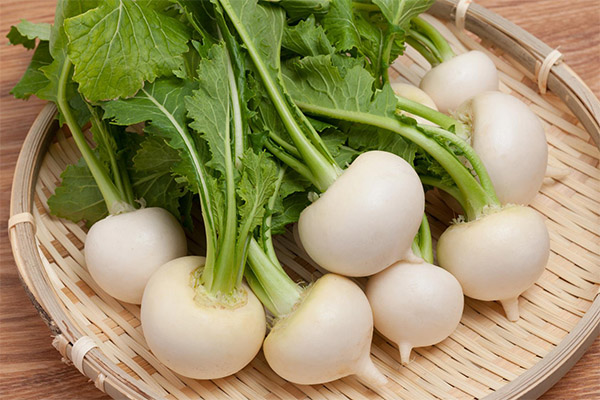
White
White turnip is considered to be the most mild in taste root vegetable. It resembles a radish and is recommended for use in children. It contains a large enough amount of fiber, so this variety copes well with constipation, cleansing the body of toxins and normalizing the digestive process. It is also a great remedy for swelling, because it removes excess fluid from the body. These properties help you fight extra pounds and achieve ideal body parameters in a shorter time.
Black
Black root vegetable, according to experts, is the most useful, because it contains the greatest number of useful nutrients. Therefore, the root vegetable is used for digestive problems, with avitaminosis, for weight loss, to improve immunity. The taste of the same vegetable of the black variety has the greatest spiciness.
Experts also specify that to get the full benefit from the use of the product, it should be taken after heat treatment, i.e. steamed or baked.
Yellow
The most familiar and popular variety is the yellow turnip. Its main qualities are the most powerful protection against viral infections of any type. We can say that the root vegetable is a natural immunostimulant. Its useful qualities also include combating periodontal disease, edema, maintaining a healthy intestinal microflora. In addition, this type of root crop is also a cosmetic, which can improve the skin and maintain its youthfulness and beauty.
Green
The green variety is a universal remedy for stomach and intestinal problems. Also its healing power extends to regulating blood pressure, activating brain activity, preventing the development of atherosclerosis, stimulating appetite, increasing visual acuity, strengthening the human bone skeleton. It is worth noting that green turnips are most suitable for raw eating and are one of the most soon-ripening varieties.
Pink
The pink variety of root vegetable is considered early maturing, as the fruit is formed and matures within 60 days. The fruit is characterized by the fact that it lacks the characteristic bitterness, which makes its taste quite mild. The product cleanses of toxins and impurities, copes with constipation, lowers cholesterol and helps improve oral health by strengthening gums and teeth.
One of the most famous varieties is considered to be Milanese.
Are turnip tops good for you?
In the well-known fairy tale about the tops and sprouts, the main character, which was a bear, chose the turnip tops, i.e. the tops of turnips, and he was very unhappy with his choice. And by the way, the leaves of this plant is a treasure trove of vitamin C and calcium. This property is valued by physicians in the United States and Western Europe. In these countries, doctors recommend that in certain diseases to eat it in food and prepare decoctions just from the turnip leaves, but not from the root. In addition, the greens of the plant is used in combination with meat and fish. It is perfect for making salads, sauces, and as a seasoning for first courses. Its flavor has a pleasant spiciness.
In addition to calcium and vitamin C, the following useful substances are found in the composition of the haulm:
- sulfur;
- iron;
- beta-carotene;
- vitamins A, D, K, E, group B;
- magnesium;
- phosphorus;
- potassium;
- copper;
- zinc;
- manganese;
- fluorine;
- selenium;
- fiber.
With such a list of nutrients, it is impossible to overestimate the benefits of haulm. The root vegetable can help with diseases of the liver, gallbladder, eyes, and skin. It also helps to cope with arthritis and anemia, insomnia and depression, prevents the appearance of tooth decay and dissolves kidney stones.
That is why the haulm of the plant should definitely be included in the daily diet and not only diversify the usual dishes with a spicy spice of the native Russian table, but also improve your health.
What is the usefulness of turnip juice
The turnip was considered by ancient Slavs as a root vegetable of divine origin, so all its parts and derivatives have powerful healing power. Not only can the pulp and leaves heal people, but the juice of this amazing vegetable also has all the beneficial micro and macronutrients. It helps to cope with coughs, asthma symptoms, painful joints, cure the throat, atherosclerosis, restore sleep, calm the nerves, activate the immune system, get rid of childhood rickets, improve dental health.
But do not forget that the use should be dosed, depending on the diagnosis and the nature of the disease. Therefore, you should consult a specialist, so that treatment and prevention can be properly selected and bring real benefit to the patient.
Turnip in medicine
In ancient times, turnips were originally eaten by ordinary citizens, but when the nobility realized what a valuable product their subjects were consuming, they included it in their diet, the more so that healers were able to appreciate all the useful properties of the root vegetable. Since then, the vegetable has become a part of the daily menu of absolutely all estates, because its benefits have been proven by doctors.
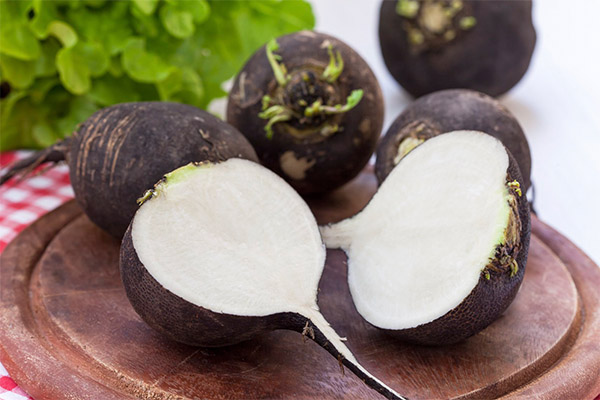
Currently, modern technology has been able to accurately establish the chemical composition of the product and its medicinal qualities. In this regard, turnip is used to treat diseases such as atherosclerosis, angina, asthma and many others. But it is worth noting separately its impact on the body of a person suffering not just a cold, but more severe diseases.
With diabetes mellitus
Diabetes mellitus is the reason for a person to refuse many products, whose glycemic index is high and does not allow you to eat them. Turnips do not belong to such vegetables or fruits, because the natural sugars they contain cannot affect the sharp rise in glucose levels. In addition, turnips can help patients with this diagnosis cope with pancreatic disorders, because they keep the pancreas healthy.
Also the root vegetable is able to improve digestion and reduce sugar levels, and vitamin deficiencies will be filled thanks to the nutrients that the vegetable is rich in. But at the same time, experts do not recommend consuming it in its raw form. It is better if it will be stewed or steamed product. In this case, the benefits of its consumption will be really real.
Important: The glycemic index of turnips is 15 units.
In pancreatitis.
Despite all the benefits and almost magical power of turnips to cure human ailments, people who have been diagnosed with pancreatitis, the consumption of the fruit is strictly prohibited. This is due to the fact that the root vegetable is quite aggressive and is a powerful irritant to the bruised pancreas. It is for this reason turnips should not be included in the menu of patients with pancreatitis in any form!
With gastritis
Gastritis is a complex disease that occurs against a background of increased or decreased acidity of the stomach. So, the use of turnips is possible only for patients with reduced stomach acid. In this case, if the patient does not have a phase of acute inflammation, the vegetable will help to establish digestion, protect the immune system, as well as saturate the body with trace elements necessary for a healthy existence. But it is recommended to use the root vegetable only in processed form, i.e. steamed, stewed or boiled.
In gout
The accumulation of purine acid and the deposition of salts in the joints lead to the development of a serious disease - gout. In this diagnosis, turnip has proven to be an excellent remedy that can reduce joint pain, have a diuretic effect, restore a weakened immune system. It has absorbent and antispasmodic properties. With this diagnosis, the product can be used as a warming compress, decoction, which is added to the patient's baths in order to reduce pain, or an ointment. Therefore, in gout, doctors recommend the use of turnip as an alternative means that can significantly improve the condition of the patient.
For the liver
With liver disease, patients should choose those products that do not load the damaged organ. This is precisely where turnips belong. The root vegetable quite effectively cleanses the blood, as well as other organs. It promotes the removal of toxins and getting rid of the sluggishness of the body. All these properties facilitate the work of the liver and contribute to its speedy recovery. However, dishes from the vegetable, which can be beneficial, should be served boiled or baked. In this case, the benefits of eating turnips will be maximum.
In cholecystitis
People suffering from gallbladder pathologies, such as cholecystitis, use turnip is contraindicated in any course of the disease, because the root vegetable is rich in fiber and essential oils that irritate the mucosa and can provoke an attack, thereby bringing harm to the person.
For coughs.
Bronchitis and dry cough are perfectly treatable with turnip, which has expectorant properties and helps to remove phlegm from the lungs. It has a devastating effect on pathogenic microbes that contribute to the development of respiratory diseases. In addition, the root vegetable increases the body's resistance to viruses and promotes faster recovery.
Also turnip is a good remedy for the prevention of coughs in people with tobacco addiction. It removes sputum from the body, which accumulates in the lungs of the smoker. It was for getting rid of coughs grandmothers first took out of the cellar turnips and treated their loved ones, and their wisdom in matters of effective remedies for getting rid of various ailments, as we know, has been tested for years!
The recipes of folk medicine based on turnip
The first who was able to appreciate exactly the healing and useful power of turnips were the ancient healers and healers, who used the root vegetable to treat their patients and improve their condition. Their knowledge and experience have reached our time in the recipes of folk medicine, not once proved their effectiveness in treating certain diseases.
To improve the metabolism
Ingredients:
- turnip - 200 g;
- Garlic - 3 cloves;
- half a lemon.
Method of preparation:
- Squeeze the juice from the lemon.
- Cut the turnips into four pieces and boil for half an hour.
- Combine the boiled root vegetable with the garlic and mash until smooth.
- Combine the decoction where the turnip was cooked with lemon juice. At the same time, the necessary amount of liquid should be 200 ml.
Take the pureed mass and decoction at the same time 20 minutes before each meal, and also at night.
Against coughing
Ingredients:
- turnip;
- honey.
Method of preparation:
- Wash the turnips and grate them.
- Then put the mass in gauze and squeeze the juice.
- In the resulting liquid add liquid honey. The ratio of products should be 1:1.
- Then insist the mixture for 2-3 hours and you can treat the cough, using the preparation as a mixture of 1 tbsp. 3-4 times a day.
Against gout.
Ingredients: turnip.
Method of preparation: the boiled root vegetable should be mashed to a homogeneous consistency and apply this mixture as a compress to the sore spots.
With a cold
Ingredients:
- Turnip - 1 pc;
- water - 250 ml.
Method of preparation:
- Grate the root vegetable with a grater.
- Then take 2 tablespoons of the resulting product and combine it with steep boiling water.
- This product should be boiled for 15 minutes and filtered.
- The resulting remedy to divide into four parts, to take the drug four times a day. In cases where quadruple reception is not possible, it is recommended to drink a glass of the resulting medicine before going to bed.
For toothache.
Ingredients: turnip.
Method of preparation:
- Wash the root vegetable and rub it on a grater.
- Grated flesh boil for 15 minutes.
- Filter the resulting product through gauze and cool to room temperature.
The resulting decoction rinse your mouth several times a day until the disappearance of pain, as well as for their prevention.
For frostbite
Ingredients:
- turnip;
- Goose grease.
Method of preparation:
- Immediately it should be noted that the goose fat will need half as much as the turnips. Rinse turnips and grate the pulp with a grater.
- Add the goose fat to the resulting raw material and mix the preparation thoroughly.
This ointment is excellent for frostbite, for gout and burns. It can be used as a compress and even leave it for the night.
For cystitis.
Ingredients:
- turnips;
- turnip tops.
Method of preparation:
- Squeeze the juice from all the components.
- Boil for 5 minutes from the boiling point. Take the remedy three times a day for 2 tbsp.
Cosmetic Applications
Turnip is useful not only as a product that satisfies hunger and contributes to maintaining health, but also as a tool that can have a beneficial effect on the skin, hair and nails. The fact is that its useful micro- and macronutrients relieve inflammation, get rid of acne, tone and saturate the epidermal cells with useful substances, whiten the skin, helping to get rid of age spots and freckles. In addition, the root vegetable helps to improve hair structure and maintain their healthy shine, as well as strengthen the nail plate.
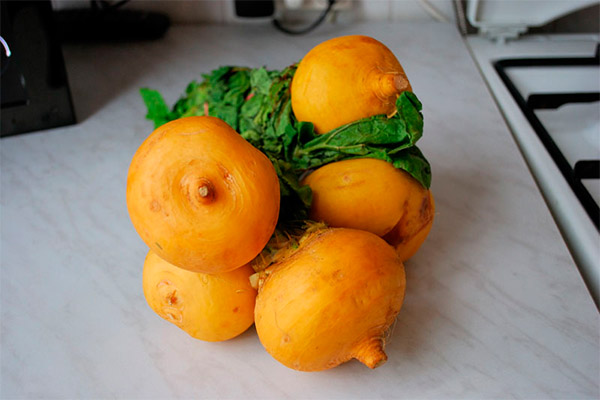
There is a fairly large number of remedies prepared at home, aimed at maintaining beauty and youthfulness. The following recipes are considered the most popular.
For the face
Against enlarged pores
Ingredients:
- turnip;
- kefir - 60 ml;
- lemon juice - 20 ml.
How to use:
- Grate a fresh root vegetable on a grater and take 20 g of pulp.
- Combine the raw material with kefir and lemon juice. Mix all the ingredients thoroughly.
- The resulting mask applied to a cleansed face and leave for 15 minutes. After that wash your face with water at room temperature.
Moisturizing
Ingredients:
- turnip juice - 20 ml;
- raw egg yolk - 1 pc;
- honey - 10 g;
- 20 gr. sour cream - 20 gr.
How to use:
- Mix all the ingredients.
- Apply the mixture to the face for 10 minutes.
- Then wash your face with water at room temperature.
Nourishing
Ingredients:
- turnip;
- olive oil - 25 ml;
- honey - 15 ml.
How to use:
- Grate the raw turnip with a grater and take 20 g of the resulting product.
- Add to it the oil, honey and mix everything well.
- The composition is applied to the face and leave for 15 minutes. Then wash your face with water at room temperature.
For hair
For Shine
Ingredients:
- turnip juice - 4 tbsp;
- Onion juice - 1 tsp.
How to use:
- Mix the components and apply to the scalp and hair roots for 30 minutes.
- Then rinse hair with warm water. Use this recipe twice a week.
For oily hair
Ingredients: turnip.
How to use:
- Grate the root vegetable on a fine grater.
- The resulting mass spread on the scalp.
- Then put on a polyethylene cap and cover your head with a towel for half an hour.
- Wash your hair with a shampoo that does not weigh you down.
Lotion-mask
Contents:
- turnip juice - 10 tbsp;
- rosemary oil - 5 drops;
- sage - 2 tbsp. herb;
- field horsetail - 2 tbsp;
- Vodka - 1 cup.
How to use:
- Mix all the ingredients and pour vodka.
- Put the mixture to insist on 2 weeks.
- Then filter the liquid and pour into a bowl of dark glass.
- With the preparation to wipe the scalp at night.
Harms and contraindications
Turnip, although it is considered a root vegetable given by the gods, but still and the "divine" vegetable has its contraindications, in which its use should be either discontinued or limited. People who suffer from the following diseases are not recommended to consume this root vegetable:
- gastritis;
- ulcer;
- colitis;
- pancreatitis;
- Thyroid dysfunction;
- diseases and pathologies of the kidneys and urinary tract;
- nervous system disorders that require medication;
- Diabetes in a complicated form;
- Allergies and individual intolerance to the product.
With these diagnoses, medics prohibit eating turnips and dishes from it in any form. In addition, it is important not to forget that this vegetable should be eaten carefully, and its daily rate should not exceed 200 g. Otherwise, you can face heartburn, increased flatulence or allergy attacks.
How to choose and store turnips
In September or October comes the season of harvesting turnips. It is dug carefully so as not to damage the valuable root vegetable itself. After harvesting you need to get rid of the haulm. The tail of the plant should not be longer than two centimeters. Such a vegetable is further dried and sorted. In this regard, it is recommended to buy the root vegetable exactly in season, because. In winter or spring, store shelves receive vegetables that have been kept in storage and may have been treated with special substances that not only extend the shelf life of the product, but also destroy its useful properties.
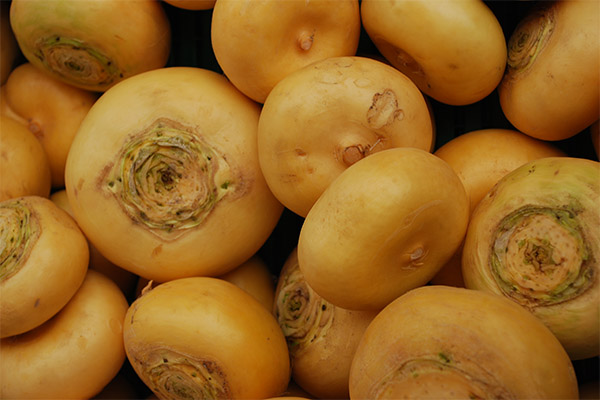
Also if the turnips are bought in season, you should choose the vegetables that have the haulm, because it will tell you how long ago the root-crops were dug up.
As for the fruit itself, its skin should be inspected for cracks and other damages, indicating diseases and infections of the product. In addition, experts say that you should choose those specimens of root-crops, the size of which does not exceed one palm.
If you follow these tips, you can choose the "queen" of the original Slavic table, which can not only please the palate, but also benefit the body, ridding it of illnesses and prolonging human health.
Once the turnip is chosen, it is worth thinking about the options for storing it. As a rule, people use two ways to store the product at home - in the refrigerator or in the cellar.
In the refrigerator turnips can remain ripe and juicy for one month. To do this, washed and dried root carrots should be placed in a special compartment for storing fruits and vegetables.
The second method of storage is the cellar. It is considered the best option for preserving the wonderful root vegetable. In order for turnips to enjoy their taste and usefulness as long as possible, they are washed, dried, covered with chalk and placed in boxes. But before this, sand is poured into the boxes, the density of the bottom layer of which should be at least three centimeters. Then the root crops are placed on the sand bed, and the vegetables should not touch each other to avoid mold contamination from the "neighbor". When the first layer of turnips is placed, it should also be covered with sand until the vegetables are completely covered. This procedure should be repeated until the box is full. The last layer should consist of sand. The optimal storage temperature is between 0 and 3°C.
Such uncomplicated ways of storing will help to preserve the root vegetable from spoiling and to use the vegetable to maintain health, or just to enjoy its taste.
Can I freeze them?
To store turnips, you can use not only the refrigerator and cellar, but also the freezer, where the root crop will perfectly preserve and will not lose its vitamins and minerals. In addition, the taste of the frozen vegetable is almost the same as fresh. Therefore, to preserve turnips for a long time and avoid the processes of rotting, to which they are subject, for example, in the cellar, it is worth thinking about storing them in the freezer.
To freeze in the freezer you need to peel the vegetable from the skin and cut into slices. Then put the cut turnip in boiling water for a couple of minutes, then put the slices in a bowl with ice and after the complete cooling put it in a colander to drain the excess liquid. Next, dry the turnip on a paper towel, put it into containers, which should be tightly covered and only then send the product to the freezer.
Freezing the vegetable in this way, you can enjoy the taste and usefulness for 8-10 months.
How to cook turnips: Recipes
Some people eat raw turnips, which is undoubtedly very useful, because all the substances are preserved in the root vegetable in full. But the vegetable is no less useful and in stewed, baked and steamed form. In addition, for some diseases, experts recommend using precisely cooked vegetables. Also in the recipes to the root vegetable are added other products that help to reveal the vegetable and themselves "sound" in a completely new way.
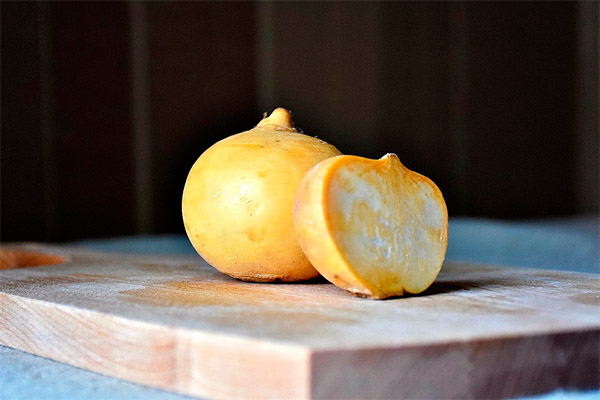
Turnip with thyme
Ingredients:
- turnip - 0.5 kg;
- olive oil - 1 tbsp;
- balsamic vinegar - 1 tbsp;
- dried thyme - 0.5 tsp;
- parsley;
- ground black pepper;
- salt.
Method of preparation:
- In a separate bowl, stir together oil, vinegar, thyme, salt and pepper.
- Wash the turnips, peel them and cut into pieces.
- In a bowl put the prepared root and combine it with the oil and vinegar mixture.
- Thoroughly mix so that the mass is evenly distributed on the turnip.
- The resulting mixture should be placed on a baking tray greased with oil and put in an oven for 25 minutes. Baking temperature should be 230 ° C.
- Turn the root vegetables over and cook for 10 minutes.
- Take out of the oven and season with parsley.
Nut and beet salad with turnips
Ingredients:
- Turnips - 0.5 kg;
- vegetable oil - 6 tbsp;
- beets - 0,5 kg;
- cashew nut - 0,2 kg;
- parsley;
- salt;
- garlic - 2 cloves;
- balsamic vinegar - 1 tbsp;
- arugula - half a bunch;
- ground black pepper.
Method of preparation:
- Peel the turnips, cut into cubes and boil in boiling water for about 2 minutes. Then drain the water and cool the product.
- Boil beets and cut into thin slices.
- Roast turnips in 3 tablespoons of oil for 5 minutes.
- Nuts also fry and cut into large pieces.
- Salt, pepper, vinegar, remaining oil, garlic and parsley combine together.
- Put the vegetables and nuts in a salad bowl and dress with the resulting sauce.
Cucumber turnip salad with egg
Ingredients:
- eggs - 2 pcs;
- turnip - 150 g;
- garlic - 1 clove;
- sour cream - 2 tbsp;
- salt.
Method of preparation:
- Peel the turnips and cut together with the cucumber in arbitrary, but small sized pieces.
- Peel the boiled eggs and grate them in a coarse grater.
- Combine the ingredients together, seasoning the salad with sour cream, garlic and salt.
How to eat turnips
For products to be beneficial, it is necessary not only to prepare them correctly, but also to know the norms and rules of their use.
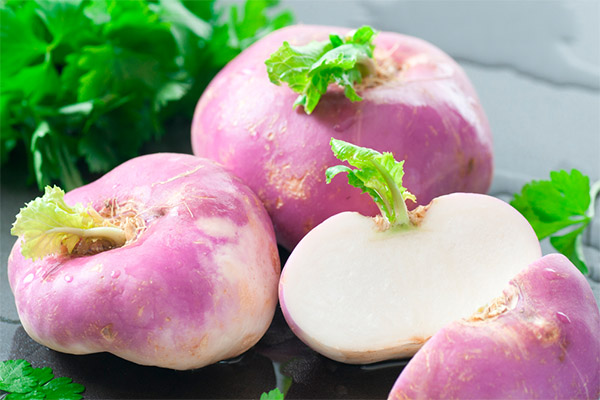
Turnips do not have any particular requirements. It can be eaten raw, baked, steamed and fried versions, as well as to prepare from it delicious soups, salads and even desserts.
How much you can eat per day
In order for the root vegetable to benefit the body, as well as to reduce the risks of negative consequences from eating turnips, it is necessary to observe the norms of its consumption. For example, it is enough for an adult to eat no more than 300 g of the product per day. Pregnant women will not harm 200 g once a week, and toddlers who have reached the age of two will be enough to eat 100-150 g in 7 days.
It is also worth noting that it is better to consume processed product, because. It can do absolutely no harm to pregnant women or young children.
Is it possible to eat at night
Experts recommend consuming the thermally processed product at any time, but still, when taking it at night, it can increase the load on the kidneys and intensify their work, so sleep will become somewhat restless, and trips to the toilet - frequent. So it's better to refuse the dishes with root vegetables before going to bed, but for dinner the turnip will be quite appropriate.
Can I eat raw turnips?
Turnip - a useful root vegetable, which can be eaten in raw form. Its unusual taste goes well with greens in salads. Especially useful in the raw form is the yellow representative of this family, but you can also enjoy the white and pink. It is they that contain less bitterness and have the greatest digestibility to the body. But the black variety is better baked, because its taste is quite sharp, and the fruit itself has the greatest rigidity.
How to remove bitterness from turnips
It's no secret that turnips have a bitterness that makes not everyone can eat them. But cooks and experienced housewives, who often use turnips for their dishes, have found a perfectly simple way to get rid of the bitterness of the root vegetable, which does not require any special additional ingredients or time-consuming. All it requires is just very hot boiling water. It is in it you need to put the washed and peeled turnip for 5 minutes. After this, the water should be drained and cook the turnip in the chosen way. Then the bitterness will be gone, and the vegetable will show all its best flavors.
Can I give turnips to animals?
Animals, like humans, need vitamins and minerals of organic origin. For this reason, their diet includes both fruits and vegetables that can saturate the four-legged organisms with all the useful nutrients.
Turnips are also useful for animals. It is an excellent diuretic. The root vegetable is a natural antiseptic and helps improve digestion. For the benefit, the root vegetable should be given either raw or baked, but you should not overdo it. It is enough to give the product once every 7 days, because more frequent intake of turnips can weaken the stool of the pet. It should be remembered that the representatives of the animal world are also not recommended to eat this vegetable in the presence of gastrointestinal diseases, kidney and liver. In other cases, turnips are allowed to eat.
Interesting facts about turnips
Turnip was a witness to the changes of the most famous ruling dynasties of Ancient Egypt and Ancient Greece. Therefore, its long history of existence is full of interesting facts:
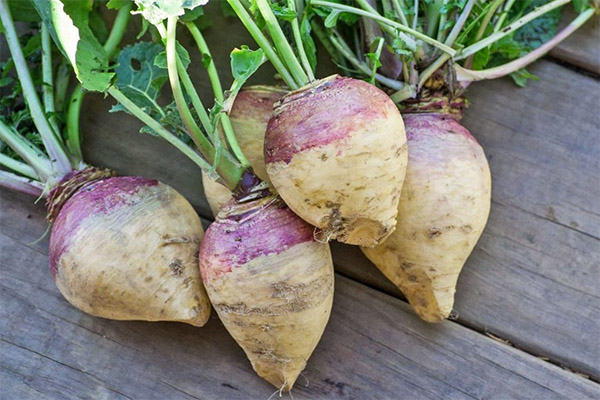
- At the very beginning of its "cultural" existence, turnips were sown in a rather unusual way - their seeds were spit out, for they were small.
- In Switzerland, the turnip has earned its own holiday, which is celebrated on a grand scale in November. On it the illumination of the celebration is made of root vegetables of different shapes and sizes.
- In Russian folklore turnips are mentioned more often than other vegetables. This proves its superiority among the foods of those times.
- Turnip lover was the English King Henry VIII, who was not distinguished by his fidelity to women (he had 6 wives), but remained absolutely faithful to his fondness for roasted turnips.
- One kilogram contains more than a million seeds of the root vegetable.
- In Russia, during the matchmaking if the groom was not to the court, he was treated to turnips, thus making it clear that his candidacy does not suit the bride.
This wonderful root vegetable with a rich history and a whole set of vitamins and minerals turned out to be totally undeservedly forgotten in Russia, where it was originally considered the most popular and nutritious food, which could afford not only wealthy citizens, but also ordinary peasants.
Recently, interest in turnips has returned. People have understood that the turnip is a gift from Mother Earth, endowed with her power to heal and cure. This product successfully copes with diseases, against which medications produced by the latest technology do not always work. Of course, turnip is not a panacea for all diseases, but to strengthen immunity, maintain health and longevity it is quite possible. So do not turn down a juicy root vegetable, easy to grow and care and useful in consumption. It is not for nothing that wise ancestors said: "Fish is water, turnip is earth, berry is grass".
«Important: All information on this site is provided for informational purposes only. purposes only. Consult a specialist before applying any recommendations. specialist. Neither the editors nor the authors are liable for any possible harm caused by materials."

